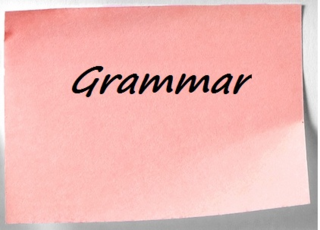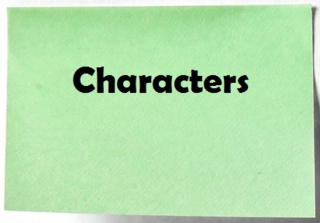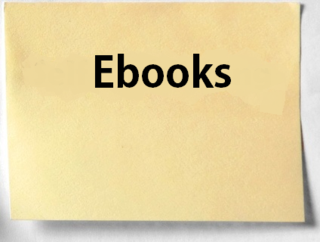Rob Bignell's Blog, page 323
September 6, 2014
You must always be ready to write
To be a  writer, one must write. With all of the modern world’s distractions – social media, the demands of work, a house to be cleaned, cell phone texts, a family that needs attention – finding time to write may not always be possible. Even if you set aside a quarter hour every day to write, interruptions will occur.
writer, one must write. With all of the modern world’s distractions – social media, the demands of work, a house to be cleaned, cell phone texts, a family that needs attention – finding time to write may not always be possible. Even if you set aside a quarter hour every day to write, interruptions will occur.
Given this, you must always be ready to commit pen to paper or fingers to keyboard. You never know when free time will avail itself, and you don’t want to miss that opportunity to write. Fostering in yourself the attitude that you are always ready to write is paramount.
How can you do that?
Always keep a story idea in your head
Each morning when you wake up, select a story idea that you will think about through the day. You may be outlining the story, you may be developing images for a specific scene in the story, you may be devising dialogue. Whenever you do mundane tasks – folding laundry, driving to the supermarket, waiting for a meeting to start – use that opportunity to think about your story idea.
Carry a notepad and pen wherever you go
When an idea for your story comes to you, write it down. Don’t limit yourself to that day’s story idea; write down any ideas for any story that come to you.
Ask how an object/idea can be incorporated in your story
Perhaps you pass a painting in a corridor at work or hear an interesting radio report about the nature of memory. Think about how that painting or insights on memory might be incorporated in your story, perhaps as an image or as a theme.
Sketch during any free moment
Can’t think of an idea for your story but stuck waiting in line or listening to a dull speaker in a meeting that doesn’t really concern anyway? Like an illustrator penciling a rough sketch of a person or a landscape, use this opportunity to write a description of a person or a location.
Need an editor? Having your book, business document or academic paper proofread or edited before submitting it can prove invaluable. In an economic climate where you face heavy competition, your writing needs a second eye to give you the edge. Whether you come from a big city like Columbus, Ohio, or a small town like Ricketts, Iowa, I can provide that second eye.
<A HREF="http://ws-na.amazon-adsystem.com/widg... Widgets</A>Related articles
 What is a writer's 'natural' temperament?
What is a writer's 'natural' temperament? Don't rely on inspiration to carry your story
Don't rely on inspiration to carry your story
September 5, 2014
Add share buttons to your book’s website
When building  a website to promote your books(s), one element to include on each page is a share button.
a website to promote your books(s), one element to include on each page is a share button.
A share button allows visitors to literally tell the world about your page. With a single click on the button, the visitor can tweet your page to all of his follows, post it to his Google+ profile, pin a photo on the page to a Pinterest board, stick it on his Facebook wall, and more.
This benefits you in a couple of ways. In the short run, it flashes your page before at least dozens and sometimes even thousands of people; the total number depends on how many people follow the visitor’s various social media sites. If you’re lucky, that tweet or post will be shared by some of the visitor’s followers. In the long run, this sharing benefits you by offering another link to your website, which in turn boosts your site’s ranking on search engines.
Often website hosts offer these share buttons so that you have to do very little to set them up. Just pick which ones will appear, all determined when building your website.
If the website provider doesn’t offer this, you still should be able to add share buttons, though it’ll be a little more arduous to do. Go to each social media’s website and locate html coding that you then cut and paste into the html coding for your website page. You likely can paste this coding onto a template for all of your website pages so that you don’t have to do it for every single page.
Don’t go overboard with the share buttons. Select the four or five social media platforms that your readers are most likely to use; any more is overkill and offers diminishing returns. Remember that readers who are in middle age (30s-50s) typically use different social media than teens and young adults; if your book is aimed at the latter, include share buttons for social media platforms that young adults use, not someone in his 40s.
You may want to use the share buttons yourself. Anytime you stop at your page for whatever reason, tweet it or post it to google+ to remind your followers about it. Many of your followers/friends may have missed the last time you tweeted or posted that page, or you may have new ones who aren’t aware of it.
Need an editor? Having your book, business document or academic paper proofread or edited before submitting it can prove invaluable. In an economic climate where you face heavy competition, your writing needs a second eye to give you the edge. Whether you come from a big city like Las Vegas, Nevada, or a small town like Accident, Maryland, I can provide that second eye.
<A HREF="http://ws-na.amazon-adsystem.com/widg... Widgets</A>Related articles
 Tweet your book to popularity
Tweet your book to popularity Use YouTube to promote your book
Use YouTube to promote your book Avoid using weak pushbutton words in story
Avoid using weak pushbutton words in story
September 4, 2014
Why do we have two title pages?
Q: I have  a lot of books at home and all the books have a half-title and then they have a title page with the name of book and author. Why do books have to have both a half-title page and a title page? – Lauren
a lot of books at home and all the books have a half-title and then they have a title page with the name of book and author. Why do books have to have both a half-title page and a title page? – Lauren
A: Thanks for your question, Lauren. The two title pages are a holdover from the 1800s. Back then, unbound books were delivered from the printer to a bookbinder, usually in a separate building, so the printer typically added a blank page on top of the book to protect the real title page; later, printers began to print just the title on that blank page so the bookbinder could more easily identify the unbound book. Though unnecessary with today's printing technology, most books retain the half-title page because the title page is full of lots of dull but legally necessary information and so is a bit unsightly as the first page of a book that a reader would open to.
Need an editor? Having your book, business document or academic paper proofread or edited before submitting it can prove invaluable. In an economic climate where you face heavy competition, your writing needs a second eye to give you the edge. Whether you come from a big city like Fresno, California, or a small town like Frizzleburg, Pennsylvania, I can provide that second eye.
<A HREF="http://ws-na.amazon-adsystem.com/widg... Widgets</A>Related articles
 How to get rid of Word's proofreading marks
How to get rid of Word's proofreading marks Always review proof your book before okaying it
Always review proof your book before okaying it
September 3, 2014
Play it smart: Don’t use 12 a.m./12 p.m.
Quick, is  12 a.m. noon or midnight? What about 12 p.m., is that midnight or noon?
12 a.m. noon or midnight? What about 12 p.m., is that midnight or noon?
Don’t know the answer? Don’t feel stupid, most readers won’t either.
And that’s a good reason to not use either term. Doing so is akin to including words from a foreign language that your readers wouldn’t know.
Instead, use noon or midnight.
Incidentally, 12 a.m. is midnight, and 12 p.m. is noon.
Need an editor? Having your book, business document or academic paper proofread or edited before submitting it can prove invaluable. In an economic climate where you face heavy competition, your writing needs a second eye to give you the edge. Whether you come from an urban area like California's Inland Empire or a rural area like Loving County, Texas, I can provide that second eye.
<A HREF="http://ws-na.amazon-adsystem.com/widg... Widgets</A>
Related articles
 Create main character that readers bond with
Create main character that readers bond with Tighten writing by cutting begin fallacy
Tighten writing by cutting begin fallacy How to properly punctuate dialogue
How to properly punctuate dialogue Heart of the matter: Core vs. corps
Heart of the matter: Core vs. corps
September 2, 2014
Use caution when shifting story’s location, time
As a plot  develops, you’ll often need to change locations and times in a story. Your characters may be on a journey to some destination or they may need to investigate a matter. You might shift between the characters so that a scene involves the villain who is at a different location than the protagonist.
develops, you’ll often need to change locations and times in a story. Your characters may be on a journey to some destination or they may need to investigate a matter. You might shift between the characters so that a scene involves the villain who is at a different location than the protagonist.
When making such changes, always ask yourself if it is necessary to further your plot. If the change is merely done because you want to share interesting notes that you’ve researched about a new locale, then it’s probably being done for its “ooh-and-ahh” factor rather than for dramatic tension. This is a problem particularly with science fiction and action-adventure stories in which elements of the story are more about the science or wonder of a place than any useful information that advances the story.
In addition, readers can become confused if you the suddenly shift the story’s location and time. One easy way to resolve this is to leave a blank line between scenes, which experienced readers will recognize as a demarcation between scenes. In ebooks, where blank lines typically appear between paragraphs, instead use asterisks or a typographical equivalent to mark the scene change.
Regardless if a blank line or asterisks are used, most location or time switches likely require describing the new scene’s landscape, if only via a phrase or clause, simply to orient the reader. Short stories due to their brevity can’t waste words on unnecessary description that slows the drama, however. Because of this, balancing the amount of description that must be provided against the dramatic need to do so.
While setting is a powerful element in a number of genres – especially science fiction, fantasy, horror, action-adventure, and westerns – remember that keeping your story’s focus on character and action almost always will yield a bigger payoff.
Need an editor? Having your book, business document or academic paper proofread or edited before submitting it can prove invaluable. In an economic climate where you face heavy competition, your writing needs a second eye to give you the edge. Whether you come from a big city like Los Angeles, California, or a small town like Hell, Michigan, I can provide that second eye.
<A HREF="http://ws-na.amazon-adsystem.com/widg... Widgets</A>Related articles
 How to get readers engaged in your story
How to get readers engaged in your story Avoid placing 'used furniture' in your story
Avoid placing 'used furniture' in your story Avoid 'As you know' Syndrome in fiction
Avoid 'As you know' Syndrome in fiction
September 1, 2014
Don’t break circuit of suspense when it's hot
The clock  says you’re an hour past your bedtime, but you don’t care. The book’s action, tension and suspense controls you. Two old friends, one now in the Gestapo, another a Luftwaffe officer, dine in a French inn. The Gestapo agent shows his old friend his prisoner being kept in the inn’s cellar. One of the naked prisoner’s eyes is swollen shut and the face heavily bruised…and she is the Luftwaffe officers’ cousin! The chapter ends.
says you’re an hour past your bedtime, but you don’t care. The book’s action, tension and suspense controls you. Two old friends, one now in the Gestapo, another a Luftwaffe officer, dine in a French inn. The Gestapo agent shows his old friend his prisoner being kept in the inn’s cellar. One of the naked prisoner’s eyes is swollen shut and the face heavily bruised…and she is the Luftwaffe officers’ cousin! The chapter ends.
You turn the page. Nothing a shot of espresso in the coffee won’t solve tomorrow morning. You just have to find out what happens next!
To do that, though, you first must wade through a page-and-a-half retelling of what occurred in the previous chapter. You find your interest sagging.
You’ve been the victim of an emotional circuit breaker. This craftsmanship error occurs when the writer cuts away from a scene once the stakes get high…and often follows it with a lower-stakes retelling of the events. The term was coined by Cambridge Science Fiction Workshop member David Alexander Smith.
Generally, an emotional circuit breaker is a bad ploy as it breaks the natural rise and fall of dramatic action. With the loss of immediacy somes the loss of tension.
Don’t mix up the emotional circuit breaker with a cliffhanger. Ending the chapter on the suspenseful high certainly was a good move. The problem came with the slowing of the story and the narration at the beginning of the next chapter. Instead, the story should have continued at the exact point where it left off.
Need an editor? Having your book, business document or academic paper proofread or edited before submitting it can prove invaluable. In an economic climate where you face heavy competition, your writing needs a second eye to give you the edge. Whether you come from a big city like New York, New York, or a small town like Bantam, Connecticut, I can provide that second eye.
<a href="http://ws-na.amazon-adsystem.com/widg... Widgets</a>Related articles
 Basic guidelines for devising cliffhangers
Basic guidelines for devising cliffhangers When should you start a new novel chapter?
When should you start a new novel chapter?
August 31, 2014
Five Great Quotes about Writing as Self-Discovery
“I feel  I'm able to get rid of any demons lurking in my psyche through my writing, which leaves me free to create all of this and to enjoy our family life, stepping away from all the fictional traumas and the dramas. If I write about family in crisis, then I won't have to live through it, I guess.” – Jodi Picoult
I'm able to get rid of any demons lurking in my psyche through my writing, which leaves me free to create all of this and to enjoy our family life, stepping away from all the fictional traumas and the dramas. If I write about family in crisis, then I won't have to live through it, I guess.” – Jodi Picoult
“I have never started a poem yet whose end I knew. Writing a poem is discovering.” – Robert Frost
“We write to taste life twice, in the moment and in retrospection.” – Anais Nin
“Words are a lens to focus one's mind.” – Ayn Rand
“Writing for me is a reckoning.” – Kao
Need an editor? Having your book, business document or academic paper proofread or edited before submitting it can prove invaluable. In an economic climate where you face heavy competition, your writing needs a second eye to give you the edge. Whether you come from a big city like San Diego, California, or a small town like Eek, Arkansas, I can provide that second eye.
<A HREF="http://ws-na.amazon-adsystem.com/widg... Widgets</A>Related articles
 Goodreads reviewer lauds my poetry collection
Goodreads reviewer lauds my poetry collection Five Quotations about Writing as Self-Discovery
Five Quotations about Writing as Self-Discovery
August 30, 2014
Build character by looking at his values
Successfully building  a character in a story almost always is the one challenge a writer absolutely must get right. It’s also often the most difficult challenge facing any writer.
a character in a story almost always is the one challenge a writer absolutely must get right. It’s also often the most difficult challenge facing any writer.
To create a character, first ask yourself, “What matters most to him?” It might be duty, proving oneself to his father, knowing the truth, helping others, or any of a thousand other values that motivate people to behave in a specific way. Upon determining this value, devise a set of physical features and personality traits that lend themselves to revealing it.
Hence, don’t give a male character “blond” hair simply because that’s how you envision him. Instead, this blondness ought to serve a purpose – perhaps it shows him as youthful or possibly it’s because he spends a lot of time outdoors so the sun has “bleached” his hair color. This can be difficult as the more important a character is to a story, arguably, the more physical description of him should be given.
Of course, these qualities should result in a believable character. Even if writing genre fiction, you’re aiming for verisimilitude. Without that, readers will have difficulty identifying with the character.
Such believability can be established by creating the character in the world where your story occurs. That is, every character is extrapolated from a culture. Hence, a modern-day character who is a rogue might wear long, unkempt hair as would a pirate, but he probably wouldn’t don shorts with puffed sleeves and wear breeches, which are clothes out of the 1500s.
Another way to establish believability is to ensure that every reader understands how the character came to be the way he is. This may require you to create a biography or resume for your character; the bio and resume wouldn’t be provided in its entirety to readers but can help you as a writer think through how the character came to be the person he is. The relevant details then would be included in the story.
Always remain flexible as creaing a character. Just because you’ve devised a character’s history, you’re not stuck with or limited to it. A character’s background can be changed as necessary while you write the story and develop him. The only rule is to be consistent in the presentation of the character’s background.
Need an editor? Having your book, business document or academic paper proofread or edited before submitting it can prove invaluable. In an economic climate where you face heavy competition, your writing needs a second eye to give you the edge. Whether you come from a big city like Portland, Oregon, or a small town like Papa, Hawaii, I can provide that second eye.
<A HREF="http://ws-na.amazon-adsystem.com/widg... Widgets</A>Related articles
 Create main character that readers bond with
Create main character that readers bond with Crack a joke - but only for a good reason
Crack a joke - but only for a good reason Select a viewpoint that gives you flexibility
Select a viewpoint that gives you flexibility
August 29, 2014
Get pullquotes on your Amazon.com page
Self-published  authors have long known that reviews on their book’s Amazon.com sales page translates to purchases. Readers often decide to buy a book based on the reviews – and a book with only one or two reviews (or worse, no reviews) probably won’t impress a reader as much as a book with a dozen or more.
authors have long known that reviews on their book’s Amazon.com sales page translates to purchases. Readers often decide to buy a book based on the reviews – and a book with only one or two reviews (or worse, no reviews) probably won’t impress a reader as much as a book with a dozen or more.
Unfortunately, the more reviews your book has, the less likely readers are to wade through all of them, meaning the best couple of comments might be skipped.
To aid readers and authors alike, Amazon.com sometimes will add a set of three quotations, pulled from your reviews, to the top of the list of customer reviews. The pullquotes are selected by a computer algorhythm that looks for common phrasing and wording used throughout the reviews of your book. It then pulls a quotation representative of the three most common phrases/words.
These quotations are quick and easy to read, include a note of how many other reviewers made similar statements, and are linked to the full review where the quotation was made. Because of this and their location, these pullquotes alone are powerful enough to generate sales.
The pullquotes won’t appear, however, until your book has enough reviews. How many that is remains a secret, but most of my editing clients say around 10 reviews will lead to pullquotes. Of my own titles, one with as few as five reviews includes the quotations; my books with only three reviews do not, however. So, if you’ve ever needed any motivation to get at least five reviews for your book, you now have it.
Currently, authors can’t select which pullquotes are used. So long as the majority of your reviews are positive, however, they will be beneficial.
Need an editor? Having your book, business document or academic paper proofread or edited before submitting it can prove invaluable. In an economic climate where you face heavy competition, your writing needs a second eye to give you the edge. Whether you come from a big city like Tampa, Florida, or a small town like Deadhorse, Alaska, I can provide that second eye.
<A HREF="http://ws-na.amazon-adsystem.com/widg... Widgets</A>Related articles
 Don't lose sleep over this confusing comma rule
Don't lose sleep over this confusing comma rule Place commas inside quotation marks
Place commas inside quotation marks Five Great Quotations about Revising
Five Great Quotations about Revising Five Great Quotations about Editing
Five Great Quotations about Editing Use consistent quotation mark, apostrophe style
Use consistent quotation mark, apostrophe style
August 28, 2014
Consider differences between paper, ebooks
In today’s  publishing world, you need to sell both a paper and an ebook version of your title. There are plenty of readers for both platforms and many who prefer one over the other, so to limit yourelf to either a paper or an ebook severely limits your potential number of buyers.
publishing world, you need to sell both a paper and an ebook version of your title. There are plenty of readers for both platforms and many who prefer one over the other, so to limit yourelf to either a paper or an ebook severely limits your potential number of buyers.
While the same content generally appears in both the paper and the ebook versions of your title, there are differences between the two platforms. Knowing those differences can help you plan how your book will be presented in each platform and make each version better.
Ebooks differ from paper books in five major ways:
g Page numbers – Ebooks do not have page numbers because the reader can change the font and font size, meaning there’s no analog between what’s seen on the ereader’s screen to what’s seen on a paper book’ page. Most eboks instead tell a reader what percentage of the book they’ve read or thumbed through.
g Interactivity – A paper book can list a website URL and a bibliography of other titles to read. As an ebook can be linked to the web, simply touching word or a title can take you to that source.
g Article-like content – Though hardly true of all ebooks, the short magazine-like approach to content is quite common among titles written primarily for electronic consumption. In contrast to a paper book, the small screen lends itself well to short paragraphs and belleted points.
g Nonconducive to pictures/poetry – Because the font sizes can be changed and the small screen size, ebook wreak havoc with line breaks in poetry. Pictures also are limited in size; while a paper book always can be made larger so that photographs run larger, all ebooks must fit a single size, which is that of an ereader’s screen.
g Price – For the moment, ebooks invariably are less expensive that paper books. That only makes sense, as an ebook can be sent electronically via the Internet to your ereader wherea a paper book requires trees, printing plants, warehouses, and trucking to create and then delver the book to a reader.
The upshot of these major differences greatly effects you during the self-publishing process. For example, you’ll likely need to format the title twice, once for your ebook and once for your paper book. You may want to add links to your ebook and not spell out the URLs. You will have to consider how photos are sized for the two different versions. You’ll have to determine and set different prices for each platform. And those are just a few of the obvious differences.
Need an editor? Having your book, business document or academic paper proofread or edited before submitting it can prove invaluable. In an economic climate where you face heavy competition, your writing needs a second eye to give you the edge. Whether you come from a big city like Austin, Texas, or a small town like Bald Knob, Arkansas, I can provide that second eye.
<A HREF="http://ws-na.amazon-adsystem.com/widg... Widgets</A>Related articles
 Will you take advantage of ebook's opportunity for innovative storytelling, content presentation?
Will you take advantage of ebook's opportunity for innovative storytelling, content presentation? Ebook readers continue to prefer Amazon.com; ereaders giving way to tablets, however
Ebook readers continue to prefer Amazon.com; ereaders giving way to tablets, however Place hyperlinks in your nonfiction ebook
Place hyperlinks in your nonfiction ebook



